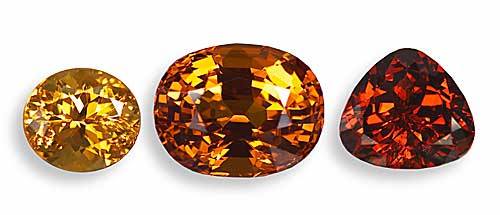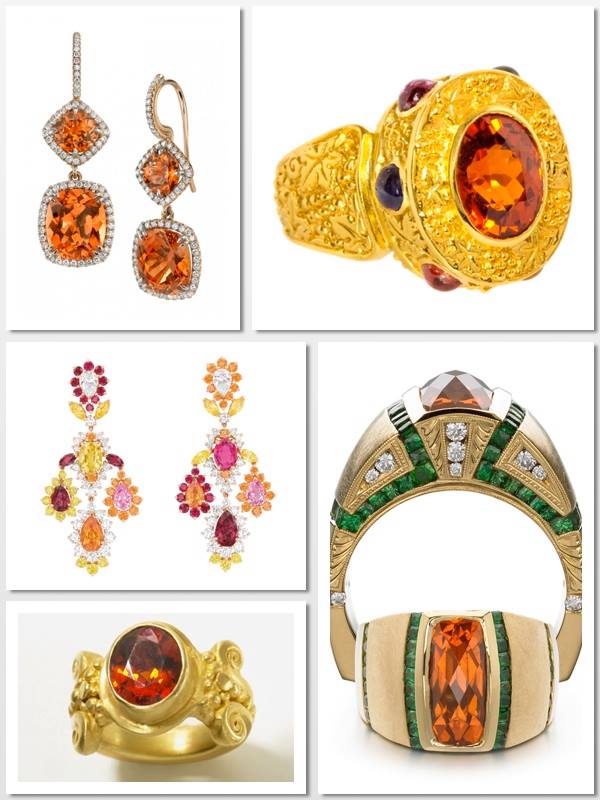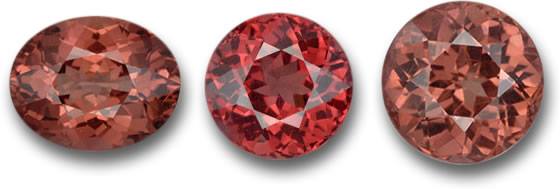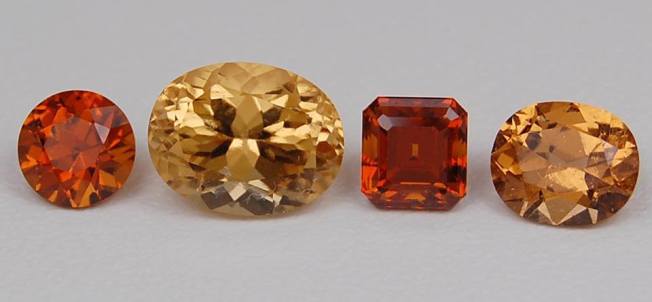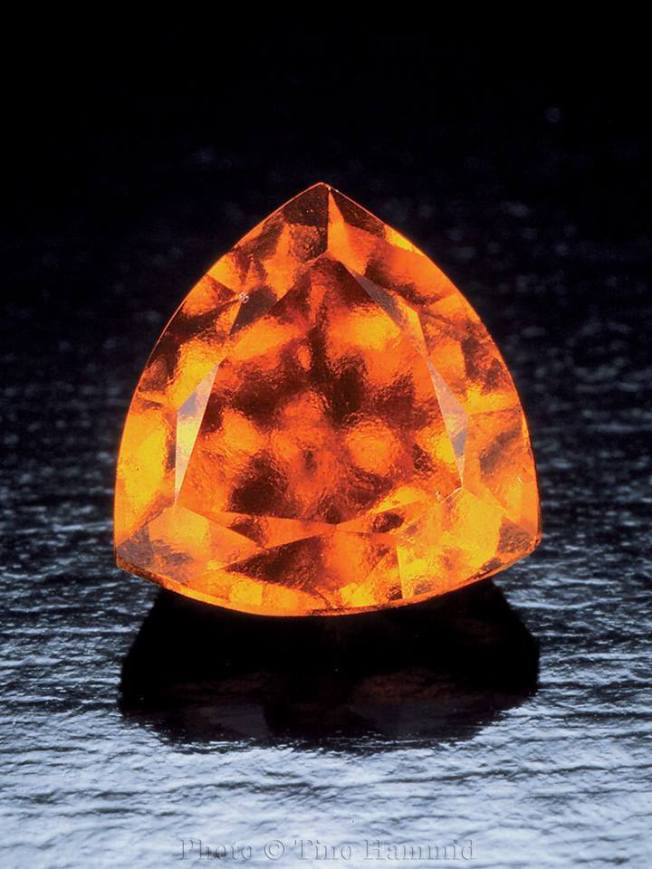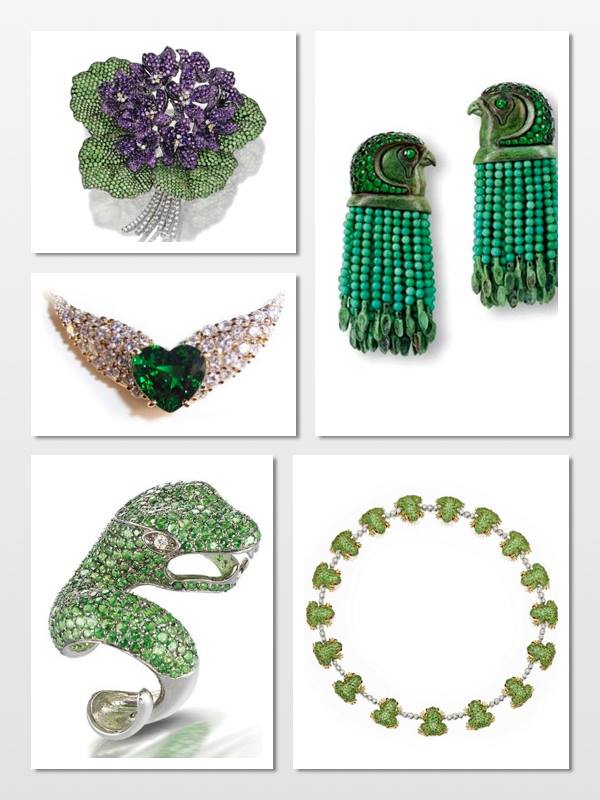Image credit: GIA
Many people born in January think the most common and widespread red garnet is their birthstone. This January birthstone, in fact, comes in the greatest variety of color!
Members of the garnet family belong to a set of closely related mineral species that form a group: same crystal structure yet different chemical composition.
There are 5 common species that are commercially important as gems: Almandine, Pyrope, Spessartite, Grossularite, and Andradite. The 6th, Uvarovite, is a rare green garnet often occurring as crystals too small to cut. It doesn’t have much commercial importance and is usually set in jewelry as clusters.
The deep red variety we normally associate with is the almandite garnet. Other worthy garnets include the green “demantoid” and “tsavorite,” the orangy red “hessonite” and the pink/red “rhodolite.”
Another variety of garnets exhibit optical phenomena because of mineral inclusion to display asterism (star-shaped pattern), chatoyancy (cat’s eye) or color change.
Today, the most important sources for garnet are Africa, Sri Lanka, and India.
January babies and gemstone enthusiasts, you are spoilt for choices!
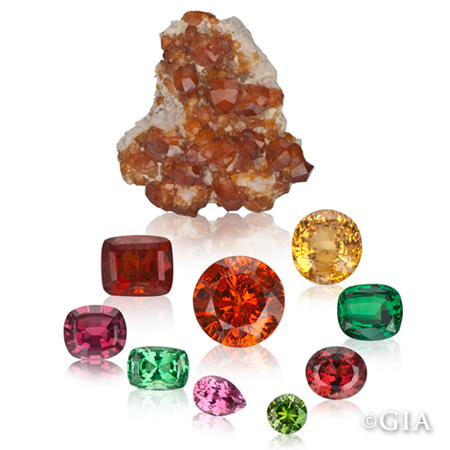

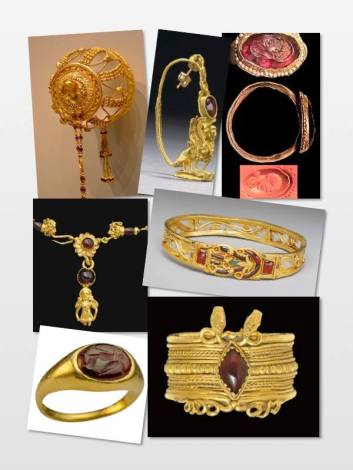

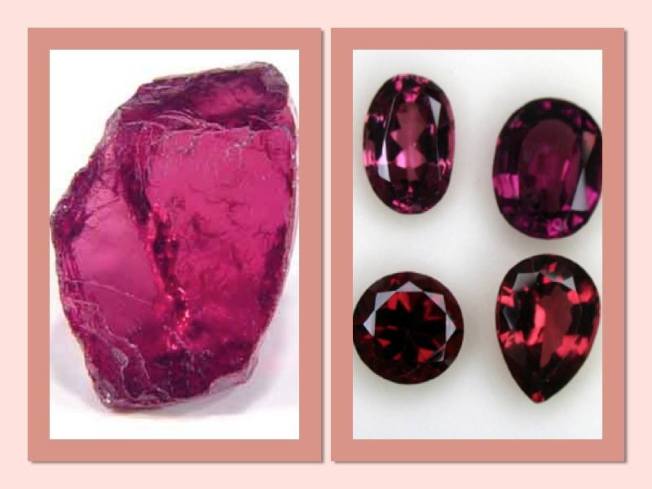
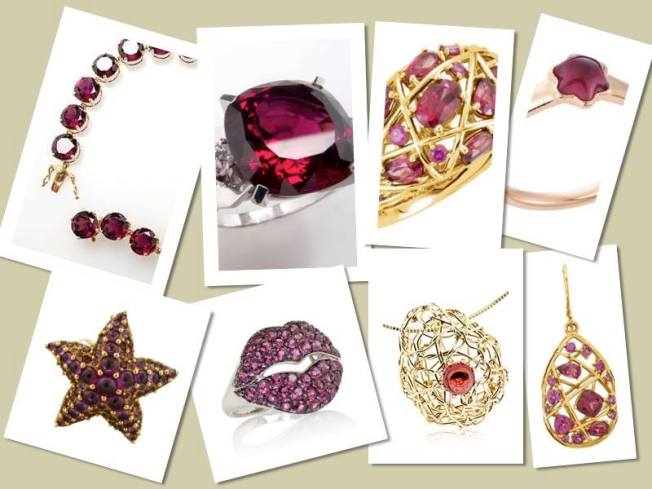

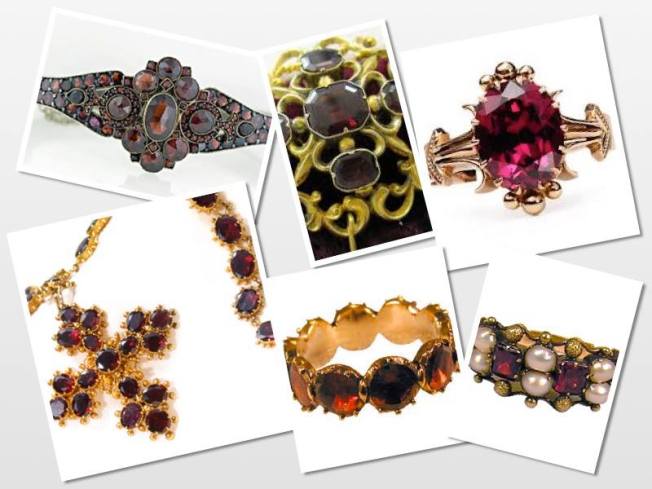
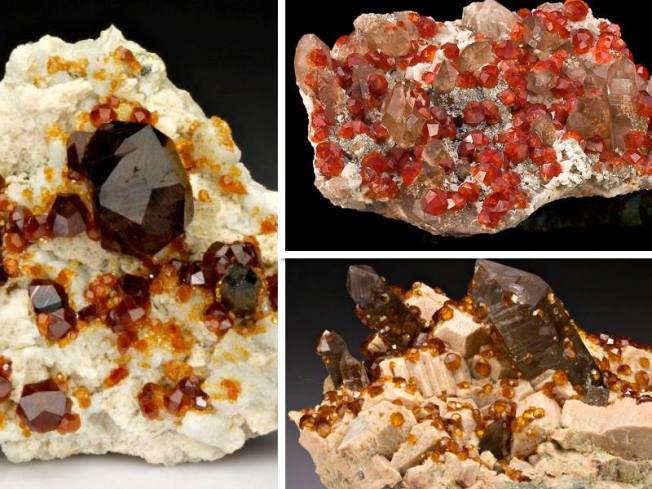
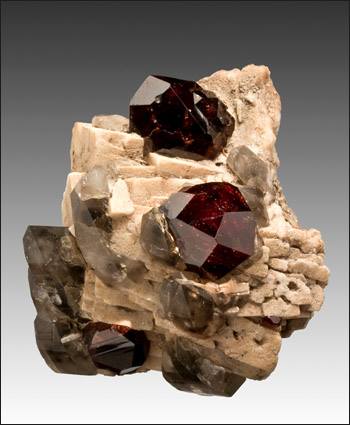
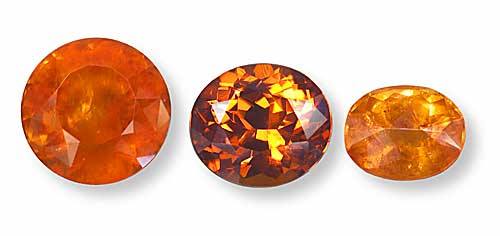 From left to right, the sleepy mandarin garnet from Namibia, the bright orange-yellow spessartites from Nigeria and Ramona, CA.
From left to right, the sleepy mandarin garnet from Namibia, the bright orange-yellow spessartites from Nigeria and Ramona, CA.